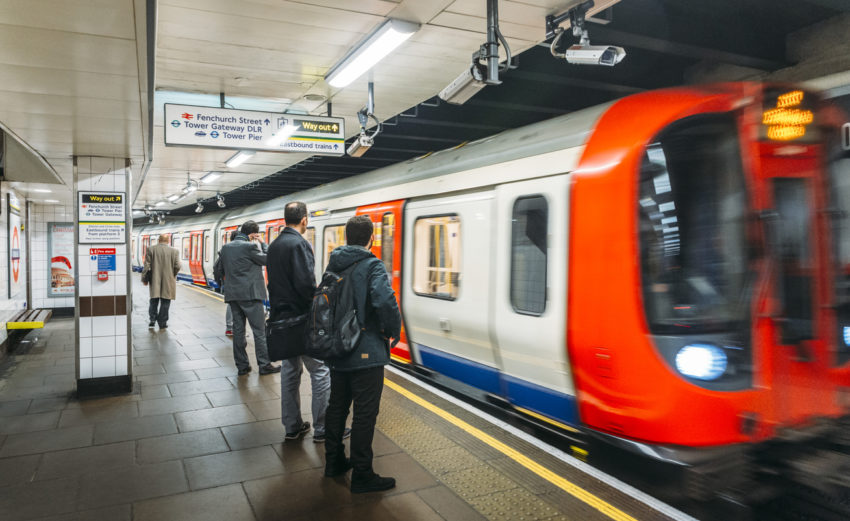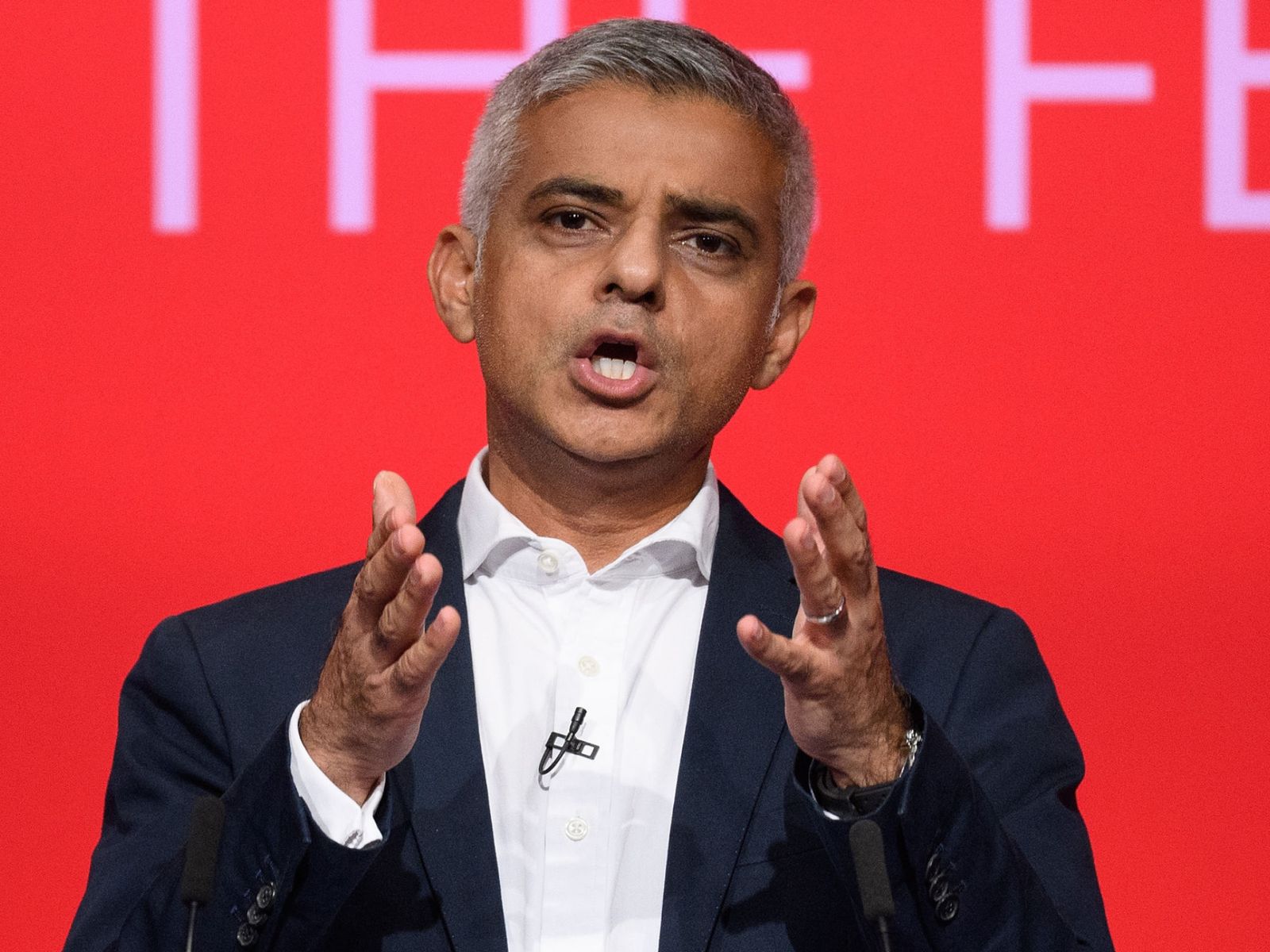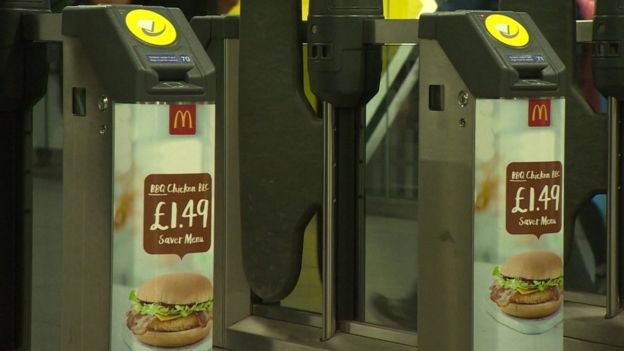
Share On Social!
London will ban advertisements for unhealthy food on public transportation in February 2019, as a publicly approved way to reduce rising obesity rates.
Other cities can use the ban as a model.
London Obesity
London has one of the highest childhood overweight and obesity rates in Europe. Of children ages 10 and 11, more than 37% are overweight or obese.

London Mayor Sadiq Khan is particularly concerned because children living in deprived neighborhoods are almost twice as likely to be overweight.
“It’s completely unacceptable that in a city as prosperous as London, where you live and the amount you earn can have a massive impact on whether you have access to healthy, nutritious food,” the mayor said in a press release. “I’m determined to change this.”
He is also concerned about childhood diabetes, which is also on the rise.
Khan, and many others, want a better food system in London to reduce the gap between child obesity rates in the richest and poorest areas in London.
London Food Strategy Draft Plan
In May 2018, Khan released the Draft London Food Strategy for public input.
Developed by the London Food Board, the draft plan provides a framework of six priority areas to make the food system work better for all Londoners.
“Language around ‘healthy choices’ too often blames people for things that are not their fault,” the draft plan states. “That is why we need to emphasize that it is the food environment in which people live and are surrounded by that needs to change.”
Parts of London are food swamps, just as they are in the United States.
The draft plan addresses issues like food insecurity; marketing and promotion of unhealthy food; food procurement by public and private sectors, like schools, hospitals, businesses, and tourist attractions; maternal and infant health; urban farming and food growing projects; as well as environmental concerns regarding the processes to grow, package, and transport food.
London’s transportation network, Transportation for London (TfL), is an untapped opportunity to promote healthier food options, according to the plan.
The more children are exposed to ads for unhealthy food, the higher their risk for consuming those foods and the higher their risk for overweight and obesity.
With 30 million journeys made every day, the TfL network is a key player in the advertising industry.
TfL‘s advertising estate makes up 40% of London’s out of home advertising by revenue, according to the draft plan.
“It is absolutely imperative that we take tough action against this ticking timebomb now, and reducing exposure to junk food advertising has a role to play in this — not just for children, but parents, families and care givers who buy food and prepare meals,” Khan said according to the press release.
Public Input
What does the public think?

More than 500 Londoners gave feedback via emails and letters. 92% supported the ban, according to the mayor’s press release.
The Mayor’s online Talk London platform, a citizen engagement platform, received 1,500 responses with 82% supporting the ban.
Additionally, a random survey of 1,020 Londoners by YouGov Plc. found that only 20% of Londoners oppose the ban.
With public support, Kahn confirmed the ban of unhealthy food on London’s transportation network in late November 2018.
Unhealthy Food Ban
The ban will take effect Feb. 25, 2019.

“This ban is part of a journey towards sending consistent messages to children about food and health – it’s odd for a child to go to school, learn what’s healthy, and then go out into the streets to be confronted by the opposite message,” said Paul Lindley and Corinna Hawkes Chair and Vice-Chair of the London Child Obesity Task Force according to the press release.
Advertisement restrictions for food and drink are determined by the Government’s Nutrient Profiling Model (NPM) categories of “less healthy”, which is maintained by Public Health England.
Examples of products that would not be accepted are sugary drinks, cheeseburgers, chocolate bars and salted nuts, while unsalted nuts, raisins and sugar free drinks would be accepted, according to the press release.
“Obesity is a huge public health threat right now and this bold step to crack down on the vast amounts of junk food advertising bombarding the capital’s children is an important move to tackle it,” said Professor Linda Bauld, Cancer Research UK’s prevention expert, according to the press release. “Being overweight or obese can increase the risk of 13 different types of cancer and obese children are five times more likely to be obese as an adult. It’s therefore vital the UK government takes inspiration from London and puts the childhood obesity plan into action as restricting junk food marketing and promotions will help families make the healthier choice, the easier choice.”
“Diabetes UK welcomes this bold move from the Mayor of London, and we hope these measures will go some way to reducing the negative impact advertising products high in sugar, salt and fat can have on all users of the TfL network, particularly the children and young people who use it every day,” said Chris Askew, Chief Executive of Diabetes UK, according to the press release.
The final London Food Strategy plan will be published in December.
Can your town’s transportation leaders do this?
Or take a page from the book of the youth group Jóvenes SANOS in Santa Cruz County, Calif.
These youth worked with transit leaders to orchestrate a new city policy to require vending machine options at all transit offices and stations meet CDC’s healthy nutrition standards.
“I am very proud of our young people,” said Santa Cruz METRO Board Directors Daniel Dodge. “They saw the problems kids their age faced with childhood obesity and family members with diabetes, noticed that the vendors around their schools were not providing healthy food alternatives, and decided to take action.”
By The Numbers
1
Supermarket
for every Latino neighborhood, compared to 3 for every non-Latino neighborhood



